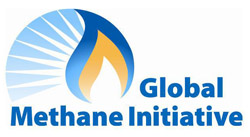
A satellite or artificial satellite is an object, typically a spacecraft, placed into orbit around a celestial body. They have a variety of uses, including communication relay, weather forecasting, navigation (GPS), broadcasting, scientific research, and Earth observation. Additional military uses are reconnaissance, early warning, signals intelligence and, potentially, weapon delivery. Other satellites include the final rocket stages that place satellites in orbit and formerly useful satellites that later become defunct.

An ion thruster, ion drive, or ion engine is a form of electric propulsion used for spacecraft propulsion. An ion thruster creates a cloud of positive ions from a neutral gas by ionizing it to extract some electrons from its atoms. The ions are then accelerated using electricity to create thrust. Ion thrusters are categorized as either electrostatic or electromagnetic.

Space Exploration Technologies Corporation, commonly referred to as SpaceX, is an American spacecraft manufacturer, launch service provider and satellite communications company officially headquartered at the SpaceX Starbase near Brownsville, Texas, though primarily based out of their former headquarters in Hawthorne, California. The company was founded in 2002 by Elon Musk with the goal of reducing space transportation costs by designing for reusability and ultimately developing a sustainable colony on Mars. The company currently produces and operates the Falcon 9 and Falcon Heavy rockets along with the Dragon spacecraft.

Blue Origin Enterprises, L.P., commonly referred to as Blue Origin is an American aerospace manufacturer, government contractor, launch service provider, and space technologies company headquartered in Kent, Washington, United States. The company makes rocket engines for United Launch Alliance (ULA)'s Vulcan rocket and manufactures their own rockets, spacecraft, satellites, and heavy-lift launch vehicles. The company is the second provider of lunar lander services for NASA's Artemis program and was awarded a $3.4 billion contract. The four rocket engines the company has in production are the BE-3U, BE-3PM, BE-4 and the BE-7.

A small satellite, miniaturized satellite, or smallsat is a satellite of low mass and size, usually under 1,200 kg (2,600 lb). While all such satellites can be referred to as "small", different classifications are used to categorize them based on mass. Satellites can be built small to reduce the large economic cost of launch vehicles and the costs associated with construction. Miniature satellites, especially in large numbers, may be more useful than fewer, larger ones for some purposes – for example, gathering of scientific data and radio relay. Technical challenges in the construction of small satellites may include the lack of sufficient power storage or of room for a propulsion system.
Environmental Defense Fund or EDF is a United States-based nonprofit environmental advocacy group. The group is known for its work on issues including global warming, ecosystem restoration, oceans, and human health, and advocates using sound science, economics and law to find environmental solutions that work. It is nonpartisan, and its work often advocates market-based solutions to environmental problems.

The Global Methane Initiative (GMI) is a voluntary, international partnership that brings together national governments, private sector entities, development banks, NGOs and other interested stakeholders in a collaborative effort to reduce methane gas emissions and advance methane recovery and use as a clean energy source. National governments are encouraged to join GMI as Partner Countries, while other non-State organizations may join GMI's extensive Project Network. As a public-private initiative, GMI creates an international platform to build capacity, development methane abatement strategies, engage in technology transfer, and remove political and economic barriers to project development for emissions reduction.

The United States produced 5.2 billion metric tons of carbon dioxide equivalent greenhouse gas (GHG) emissions in 2020, the second largest in the world after greenhouse gas emissions by China and among the countries with the highest greenhouse gas emissions per person. In 2019 China is estimated to have emitted 27% of world GHG, followed by the United States with 11%, then India with 6.6%. In total the United States has emitted a quarter of world GHG, more than any other country. Annual emissions are over 15 tons per person and, amongst the top eight emitters, is the highest country by greenhouse gas emissions per person.
Carbon monitoring as part of greenhouse gas monitoring refers to tracking how much carbon dioxide or methane is produced by a particular activity at a particular time. For example, it may refer to tracking methane emissions from agriculture, or carbon dioxide emissions from land use changes, such as deforestation, or from burning fossil fuels, whether in a power plant, automobile, or other device. Because carbon dioxide is the greenhouse gas emitted in the largest quantities, and methane is an even more potent greenhouse gas, monitoring carbon emissions is widely seen as crucial to any effort to reduce emissions and thereby slow climate change.
Fugitive emissions are leaks and other irregular releases of gases or vapors from a pressurized containment – such as appliances, storage tanks, pipelines, wells, or other pieces of equipment – mostly from industrial activities. In addition to the economic cost of lost commodities, fugitive emissions contribute to local air pollution and may cause further environmental harm. Common industrial gases include refrigerants and natural gas, while less common examples are perfluorocarbons, sulfur hexafluoride, and nitrogen trifluoride.

Rocket Lab USA, Inc. is a publicly traded aerospace manufacturer and launch service provider. It operates and launches lightweight Electron orbital rockets used to provide dedicated launch services for small satellites and a suborbital Electron variant called HASTE. The company plans to offer a larger Neutron rocket as early as 2025. Electron rockets have launched to orbit 49 times from either Rocket Lab's Launch Complex 1 in New Zealand or at the Mid-Atlantic Regional Spaceport in Wallops Island, Virginia. In 2023 Rocket Lab launched one sub-orbital HASTE rocket from Wallops Island, Virginia. Rocket Lab manufactures and operates spacecraft and is a supplier of satellite components including star trackers, reaction wheels, solar cells and arrays, satellite radios, separation systems, as well as flight and ground software.

The Suomi National Polar-orbiting Partnership, previously known as the National Polar-orbiting Operational Environmental Satellite System Preparatory Project (NPP) and NPP-Bridge, is a weather satellite operated by the United States National Oceanic and Atmospheric Administration (NOAA). It was launched in 2011 and is currently in operation.

Planet Labs PBC is a publicly trading American Earth imaging company based in San Francisco, California. Their goal is to image the entirety of the Earth daily to monitor changes and pinpoint trends.
Increasing methane emissions are a major contributor to the rising concentration of greenhouse gases in Earth's atmosphere, and are responsible for up to one-third of near-term global heating. During 2019, about 60% of methane released globally was from human activities, while natural sources contributed about 40%. Reducing methane emissions by capturing and utilizing the gas can produce simultaneous environmental and economic benefits.

The New Zealand Space Agency is an agency within the New Zealand Ministry of Business, Innovation and Employment (MBIE) charged with "space policy, regulation and business development" relating to space activities in New Zealand.

Imaging X-ray Polarimetry Explorer, commonly known as IXPE or SMEX-14, is a space observatory with three identical telescopes designed to measure the polarization of cosmic X-rays of black holes, neutron stars, and pulsars. The observatory, which was launched on 9 December 2021, is an international collaboration between NASA and the Italian Space Agency (ASI). It is part of NASA's Explorers program, which designs low-cost spacecraft to study heliophysics and astrophysics.
NASA's Pathfinder Technology Demonstrator (PTD) Project is a series of tech demonstrations of technologies aboard a series of nanosatellites known as CubeSats, providing significant enhancements to the performance of these versatile spacecraft. Each of the five planned PTD missions consist of a 6-unit (6U) CubeSat with expandable solar arrays.

Routine flaring, also known as production flaring, is a method and current practice of disposing of large unwanted amounts of associated petroleum gas (APG) during crude oil extraction. The gas is first separated from the liquids and solids downstream of the wellhead, then released into a flare stack and combusted into Earth's atmosphere. Where performed, the unwanted gas has been deemed unprofitable, and may be referred to as stranded gas, flare gas, or simply as "waste gas". Routine flaring is not to be confused with safety flaring, maintenance flaring, or other flaring practices characterized by shorter durations or smaller volumes of gas disposal.
Kayrros is an environmental intelligence company founded in 2016.












